Known for its magnificent views and diverse landscapes, Colorado Springs is hailed as one of the top cities to live in the U.S. Colorado’s second-largest city sits at 6,035 feet above sea level and offers its residents an abundance of outdoor activities.
While Colorado Springs serves as an outdoor playground for many folks, this sprawling city has much more to offer.
It’s home to some of the state’s best universities, several Army and Air Force outposts, and the U.S. Olympic & Paralympic Training Center.
As a result, Colorado Springs has a thriving economy and a stable job market.
If you’re considering relocating to Colorado Springs, there’s much to consider.
While the city’s 471,000 residents love to talk about the joys of living in the Springs, it does have some drawbacks.
Our list of the top pros and cons of living in Colorado Springs will help you determine if it’s a good fit for you and your family.
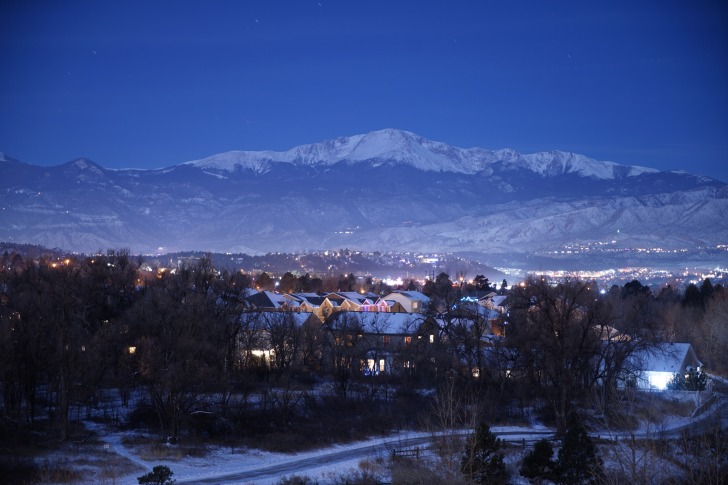
Contents
Pros of Living in Colorado Springs
1. Affordable Cost of Living
Cost of living is one of the top considerations when relocating.
Located in one of the nation’s fastest-growing states, Colorado Springs has experienced significant growth over the last decade.
Despite this rapid growth, Colorado Springs continues to rank among the most affordable metro areas.
Both living wages and property prices have steadily increased, making it a more affordable option than Boulder or Denver.
The cost of living in this region is approximately 13% lower than in other areas.
The average rent prices are just over $1,500, while housing prices are about 4% lower than the rest of Colorado.
2. An Outdoor Oasis
Fitness isn’t just a hobby for Colorado Springs residents; it’s a way of life.
Between the city’s picturesque parks, state parks, and mountain trails, it’s hard to resist the draw to the outdoors.
Whether you enjoy water sports or mountain trails, summer activities, or winter sports, Colorado Springs has something for everyone.
If you don’t draw inspiration from the locals’ fitness habits, just look to Pikes Peak.
At over 14,000 feet, this magnificent summit will draw you in and inspire you to live your best life.
3. Temperate Climate
Colorado Springs is located in the front range of the Rocky Mountains.
The weather here isn’t as harsh, as it’s not directly in the mountains.
In fact, this region is located in a “banana belt.”
The weather is warmer than in the surrounding areas, providing the perfect environment for bananas to grow.
Colorado Springs enjoys an average of 300 days of sunshine annually.
That means you get to experience all four seasons, a rarity in many regions of the country.
Average seasonal temperatures in Colorado Springs:
- Winter – 6° F (low) / 45° F (high)
- Spring – 24° F (low) / 79° F (high)
- Summer – 50° F (low) / 84° F (high)
- Fall – 34° F (low) / 74° F (high)
Colorado Springs boasts some of the best air quality in the country.
Both the pollution index and air quality rank better than the national average.
4. Community
If you’ve ever wanted to live in a metropolitan area that has a small-town feel, Colorado Springs may be the perfect fit.
The city is spread out so that everyone has their space, yet small enough to provide a sense of community.
Colorado Springs hosts a variety of annual events and festivals.
These events bring all the locals together, which adds to that small-town feel.
5. Education System
The residents of Colorado Springs understand the value of a good education.
The city is home to some of the state’s top public and private schools.
Classrooms are limited to one teacher for every sixteen students, ensuring your child’s educational needs are met through their entire educational career.
The average high school diploma scores and Bachelor’s degree rates are both higher than the national average.
6. Great for Small Business Owners
Colorado Springs was recently named the 9th best city in the U.S. to start a business.
Not only has it consistently made this list, but it’s also moved up the ranks year after year.
Small businesses make up a large percentage of Colorado Springs businesses.
This business-friendly community makes every effort to support small businesses and shop locally whenever possible.
Pikes Peak Small Business Development Center has helped create an innovative, pro-business environment.
They host events that help small businesses gain traction in the community and offer a variety of free resources and services to help local businesses grow.
7. Healthy Job Market
The city’s economy is strong and diverse.
Colorado Springs is home to over 35 Fortune 500 companies, including Progressive Insurance and Amazon.
This, combined with its multiple colleges, military outposts, and airport, has helped stimulate its local economy.
While the Pikes Peak region’s businesses are diverse, key industries include healthcare, manufacturing, aerospace, defense, IT, and cybersecurity.
Job growth continues to rise and the unemployment rate continues to fall (3.5% as of June 2022).
Cons of Living in Colorado Springs
1. The Traffic
Any city experiencing growth and progress also faces some challenges.
An increasing number of people are moving to Colorado Springs in search of a happier, more stable life.
Unfortunately, the city’s infrastructure wasn’t designed for such an influx of transplants.
One result of this influx is heavier traffic.
The average commute time in Colorado Springs is 24 minutes.
Depending upon where you’re relocating from, this may be a pro, rather than a con.
Locals recommend leaving ample time for your morning commute, particularly when unexpected bad weather strikes.
2. Higher Risk of Sunburn
The altitude is one of the biggest adjustments many transplants face.
Many people underestimate the impact higher altitudes can have on their bodies.
While you’re getting acclimated, you can avoid altitude sickness by drinking lots of water, getting lots of sleep, and avoiding alcohol.
It’s important to remember that the air is thinner at higher elevations.
At over a mile above sea level, Colorado Springs gets 25% less protection from the sun than cities closer to sea level.
While you’re only a mile closer to the sun than most cities, there’s a much greater risk of getting sunburned.
Locals offer the following advice regarding sun protection:
- Never leave home without your sunscreen
- Go for the higher SPF whenever possible
- Don’t forget your lips – invest in a chapstick that has SPF in it
- Protect your eyes with sunglasses
- Wear a sunhat with a wide brim that covers your face, ears, and neck
3. Noise Pollution
The military presence in Colorado Springs benefits the community in many ways.
One downside to military activity is the noise that it brings.
Planes fly overhead. Vehicles move about. Large military equipment works 24/7.
If you’re a light sleeper or if constant noise bothers you, Colorado Springs might not be the right fit for you.
4. Crime Rate
While Colorado Springs has many positives, the crime rate is not one of them.
The overall crime rate is 70% higher than the rest of the United States, while property crime is 73% higher than the national average.
Unfortunately, the city is experiencing the biggest crime wave since the 1980s.
Unfortunately, cities across the globe have seen an uptick in crime in the last three years.
5. Water Is a Challenge
The higher altitude and less rainfall, coupled with the fact that 40% of Colorado is a high plains desert have made water the most sought-after natural resource in Colorado.
As a result, Colorado is constantly looking for ways to conserve water.
If you’re relocating from an area that’s never experienced a drought, moving to Colorado Springs may feel like you’ve moved to another planet.
Water conservation efforts are constantly evolving based on current conditions.
Everyone is affected during droughts, and you can expect to see major fluctuations in your water bills from one month to the next.
If you plan to build a new home, thoroughly research the current laws before purchasing any land.
Permits change from one plot of land to the next and laws change regularly.
Many transplants have lost thousands of dollars because they were unaware of the water rules on that particular plot of land.
6. Dry Air
If you’re coming from a humid climate, the air in Colorado Springs may be a welcomed change.
The air here is very dry.
The region’s dry air has both pros and cons.
Water from a rainstorm evaporates fast.
Snow melts quickly.
Wet towels take less time to dry.
The dryness also takes the chill out of the winter air, which is why locals can wear shorts in 45-degree weather.
With dry air comes dryer skin.
If you’re prone to nosebleeds or have eczema or psoriasis, this is a factor to consider before moving to the area.
7. Fashion Faux Pas
While Colorado Springs is known for its stunning views, it’s not known for its fashion sense.
In fact, the city earns a spot on Movoto’s list of the nation’s worst dressed cities.
This region experience erratic weather patterns.
It could be 40 degrees when you leave for work and reach the mid-80s by dinnertime.
As a result, locals are more concerned with comfort and layering for the weather than making a fashion statement.
8. Erratic Weather
Due to the region’s topography, the weather in Colorado Springs can be unpredictable.
Unfortunately, this isn’t limited to small temperature changes.
Hail, severe thunderstorms, twenty-degree temperature changes, and snowstorms are all possible at any given time.
The only thing you can expect is the unexpected.
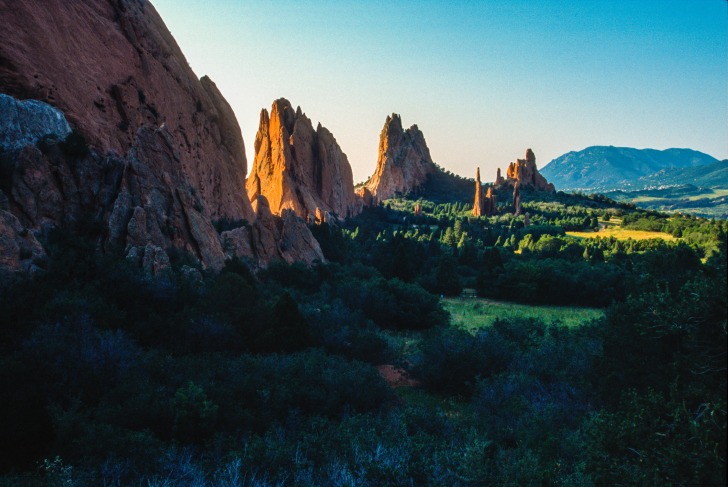
Pros and Cons of Living in Colorado Springs, CO – Summary Table
| Pros of Living in Colorado Springs | Cons of Living in Colorado Springs |
|---|---|
| 1. Affordable Cost of Living | 1. The Traffic |
| 2. An Outdoor Oasis | 2. Higher Risk of Sunburn |
| 3. Temperate Climate | 3. Noise Pollution |
| 4. Community | 4. Crime Rate |
| 5. Education System | 5. Water Is a Challenge |
| 6. Great for Small Business Owners | 6. Dry Air |
| 7. Healthy Job Market | 7. Fashion Faux Pas |
| 8. Erratic Weather |
Colorado Springs Safety Overview
READ THE FULL REPORT: Colorado Springs Safety Review
Safety Index:
- OVERALL RISK: MEDIUM
- TRANSPORT & TAXIS RISK: LOW
- PICKPOCKETS RISK: MEDIUM
- NATURAL DISASTERS RISK: HIGH
- MUGGING RISK: MEDIUM
- TERRORISM RISK: MEDIUM
- SCAMS RISK: LOW
- WOMEN TRAVELERS RISK: MEDIUM
Frequently Asked Questions
What Are Winters Like in Colorado Springs?
Winters are mild, with most of the snow falling in Spring.
The average temperature range is between 28 and 60 degrees Fahrenheit.
Are There Tornadoes in Colorado Springs?
While the region’s known for its erratic weather, the risk of damage from tornadoes and earthquakes is lower than the national average.
How Much Do You Need to Live Comfortably in Colorado Springs?
A single individual needs an annual income of almost $29,000 to live comfortably in Colorado Springs.
The Chamber of Commerce’s cost of living calculator can help you determine your specific needs.
Is It Better to Live in Colorado Springs or Denver?
U.S. News ranked Colorado Springs as the second-best place to live in 2022, whereas Denver came in 55th.
We’ll let you decide for yourself.
What Is the Best Area to Live in Colorado Springs?
This depends upon your budget, whether you’re buying or renting, and what you’re looking for in a neighborhood.
Broadmoor, Old Colorado City, and Briargate are the top most desirable neighborhoods.
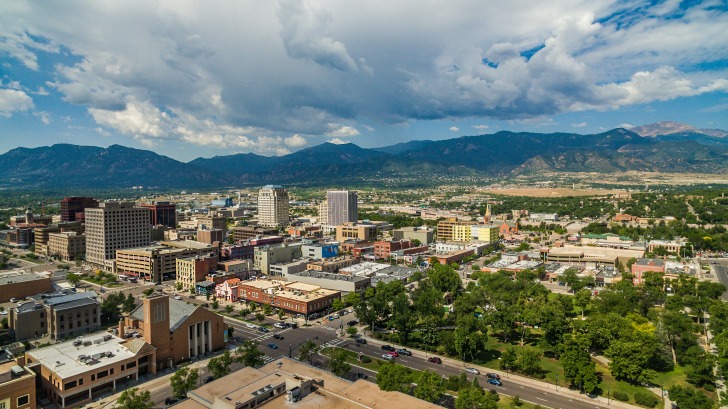
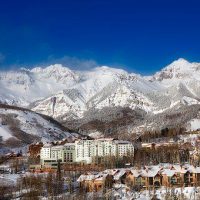
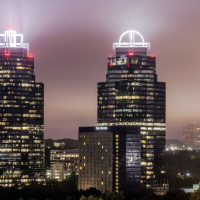
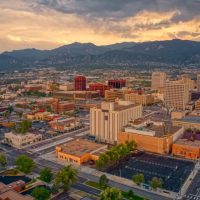








With numerous parks, trails, and recreational areas, Colorado Springs encourages an active and healthy lifestyle for its residents.
The city’s vibrant cultural scene, including museums, theaters, and annual events, provides a wealth of entertainment options.
Colorado Springs is home to a diverse job market, particularly in aerospace, defense, and technology, offering career opportunities and economic stability.
The city boasts a high quality of life, a low crime rate, and a strong sense of community, creating a safe and welcoming environment for residents.
Colorado Springs offers breathtaking natural beauty with easy access to the stunning Rocky Mountains and numerous outdoor activities, making it a paradise for nature enthusiasts.